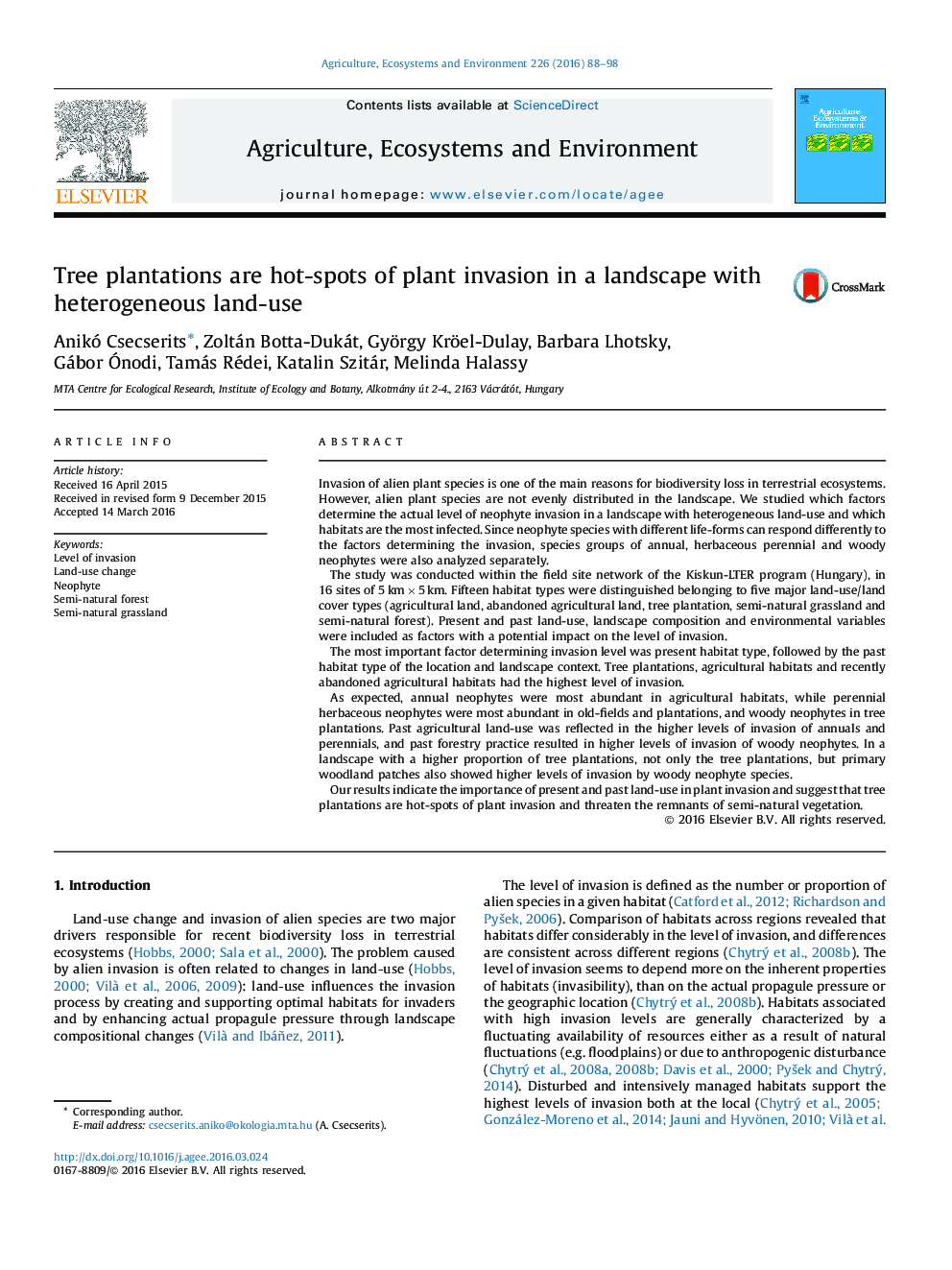| کد مقاله | کد نشریه | سال انتشار | مقاله انگلیسی | نسخه تمام متن |
|---|---|---|---|---|
| 2413517 | 1552026 | 2016 | 11 صفحه PDF | دانلود رایگان |
• Factors influencing the level of plant invasion were studied in a mixed landscape.
• Present habitat type is the main factor determining the level of invasion.
• Tree plantations and agricultural habitats have the highest level of invasion.
• Present landscape composition and past land-use also affect invasion level.
Invasion of alien plant species is one of the main reasons for biodiversity loss in terrestrial ecosystems. However, alien plant species are not evenly distributed in the landscape. We studied which factors determine the actual level of neophyte invasion in a landscape with heterogeneous land-use and which habitats are the most infected. Since neophyte species with different life-forms can respond differently to the factors determining the invasion, species groups of annual, herbaceous perennial and woody neophytes were also analyzed separately.The study was conducted within the field site network of the Kiskun-LTER program (Hungary), in 16 sites of 5 km × 5 km. Fifteen habitat types were distinguished belonging to five major land-use/land cover types (agricultural land, abandoned agricultural land, tree plantation, semi-natural grassland and semi-natural forest). Present and past land-use, landscape composition and environmental variables were included as factors with a potential impact on the level of invasion.The most important factor determining invasion level was present habitat type, followed by the past habitat type of the location and landscape context. Tree plantations, agricultural habitats and recently abandoned agricultural habitats had the highest level of invasion.As expected, annual neophytes were most abundant in agricultural habitats, while perennial herbaceous neophytes were most abundant in old-fields and plantations, and woody neophytes in tree plantations. Past agricultural land-use was reflected in the higher levels of invasion of annuals and perennials, and past forestry practice resulted in higher levels of invasion of woody neophytes. In a landscape with a higher proportion of tree plantations, not only the tree plantations, but primary woodland patches also showed higher levels of invasion by woody neophyte species.Our results indicate the importance of present and past land-use in plant invasion and suggest that tree plantations are hot-spots of plant invasion and threaten the remnants of semi-natural vegetation.
Journal: Agriculture, Ecosystems & Environment - Volume 226, 16 June 2016, Pages 88–98
